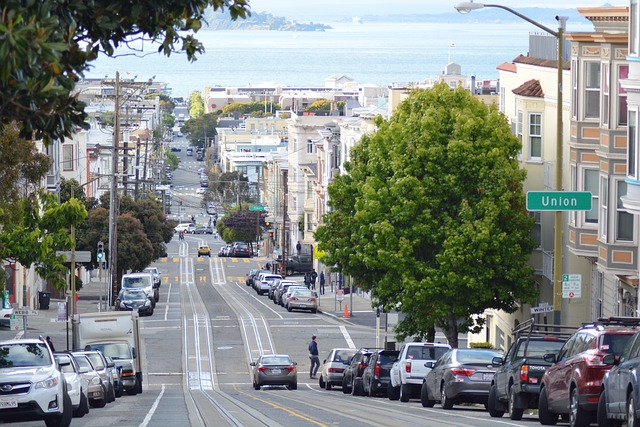San Francisco Considers Ban on Right Turn on Red
In the majority of cities, towns, and states in the United States, motor vehicle drivers can turn right (i.e., Right Turn on Red) when faced with a red light if vehicle and pedestrian traffic conditions allow, unless a sign specifically states otherwise. Most non-turn traffic signs feature “No Turn on Red” or “No Turn on Red from This Lane” black text against a white background with or without a red dot or a right arrow and a red prohibition circle with a backslash line running through it. Yet, many major cities, including San Francisco, plan to reconsider a historically sound fuel-, money- and time-saving measure because of the risk to bicyclists and pedestrians.
How Does “Right Turn on Red” Work?
Right Turn on Red (ROTR), also called Turn on Red and Right on Red, allows a vehicle in a one-lane or two-lane scenario to turn right after stopping completely when the traffic light shows a red stop light. In a two-lane arrangement that allows drivers in both lanes to turn left on green or the drivers in the right lane to turn right, only the driver in the right lane can turn. In both scenarios, the driver must check for bicyclists, pedestrians and traffic flowing in the desired direction or across the desired street and yield the right of way. Left Turn on Red (LOTR) from one lane, or the left lane in a two-lane scenario, also exists. In some regions, cities and states strictly prohibit LOTR with a red light and a sign when a driver faces multiple lanes of oncoming traffic.
Why Are Bans Under Consideration?
Cities like San Francisco, Chicago and New York have experienced an uptick in distracted- and non-distracted driver accidents caused by drivers who turn right on red without yielding or ignore signs that prohibit the action. City officials believe they can only stop incidents that result in grievous injuries and deaths and lead to vehicle and public property damage with city-wide bans. In many instances, drivers pull into and block crosswalks. Some pedestrians suffer life-long severe physical and emotional injuries or the loss of their lives or that of their pets. Bicyclists who survive near-misses often lose their only means of transportation.
In 2025, drivers in the District of Columbia must observe a recently approved ban. City leaders and transportation agencies in Denver, Los Angeles, San Francisco, Seattle, and many other locations now have bans under consideration. That said, questions exist about whether cities can even make these decisions, given that the practice of turning on red began with federal oversight and approval.
Does Banning Turn on Red Causes Harm?
According to the San Francisco Municipal Transportation Agency, Right Turn on Red causes approximately 20% of all SF signal-related crashes a year in which a driver turns and hits a bicyclist or pedestrian. In 2021, there were 316 bicycle/vehicle collisions in the city, 2 of which were fatal. Yet banning the practice might result in an equivalent or higher level of harm to bicyclists and pedestrians.
For example, San Francisco experiences higher-than-average incidents of road rage involving anger toward bicyclists each year. A ban might result in severe traffic congestion and exacerbate driver anger toward smaller vehicles that continue to move in stopped traffic conditions. Stopped traffic and congestion can also cause vehicle idling, an increase in fossil fuel usage, and the generation of air pollution in a city that, per the American Lung Association, ranks as one of the most polluted cities in California and the country. Lastly, a ban would slow down and delay commercial and public transportation, including delivery vans and trucks, garbage and recycling trucks, and school, city, and regional buses. These delays might adversely impact the economy and even delay workers from reaching or leaving their places of employment on time.

